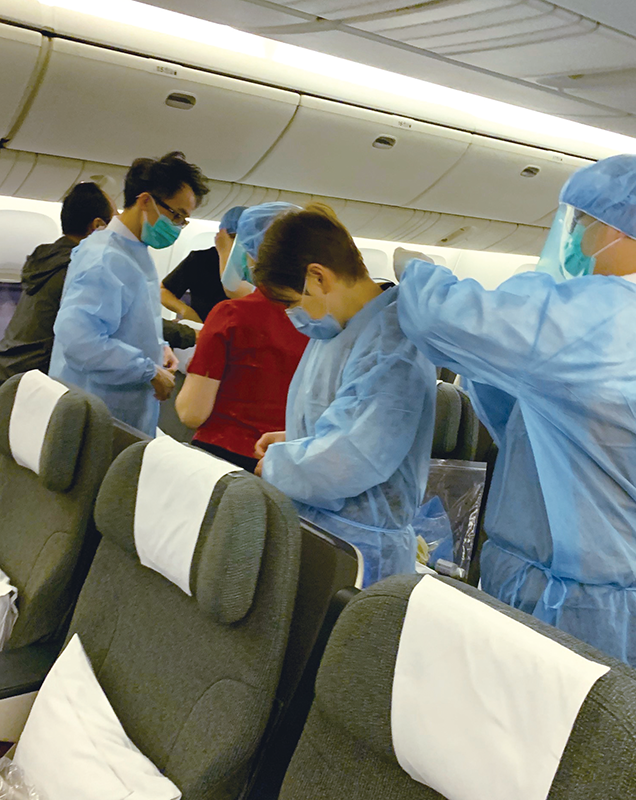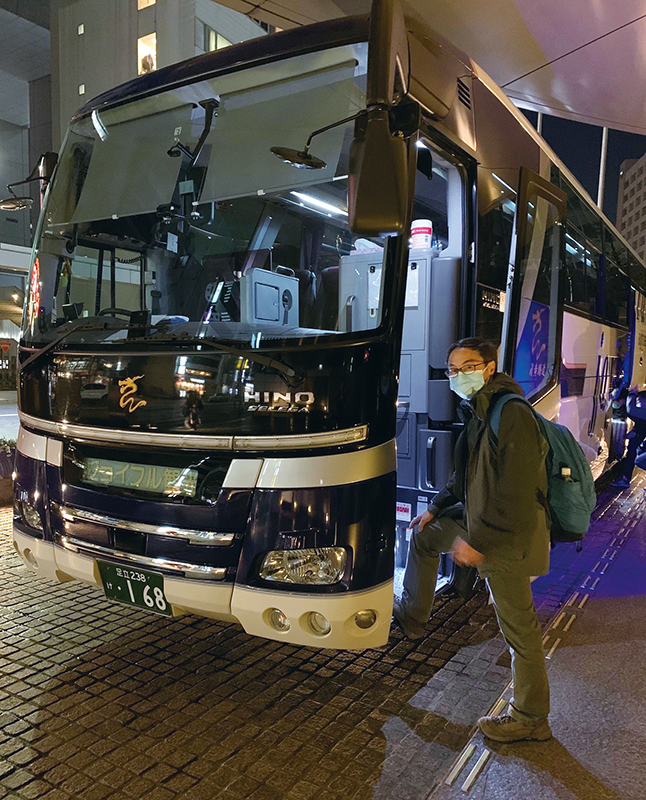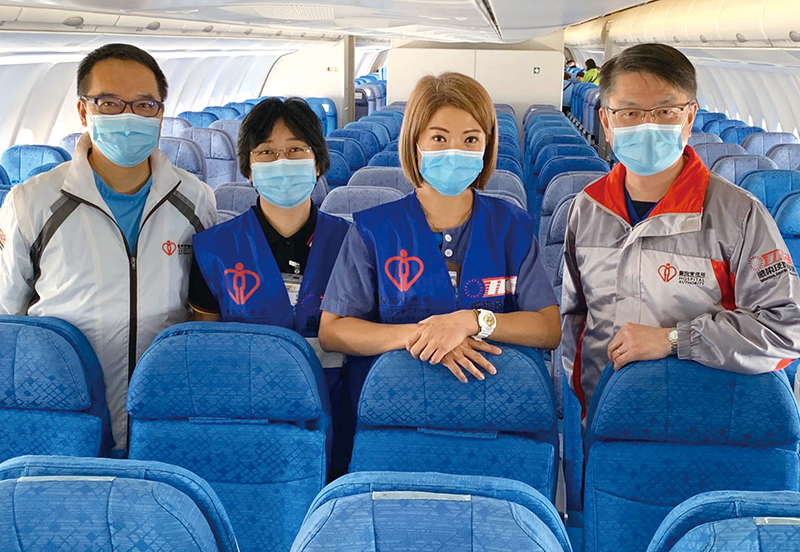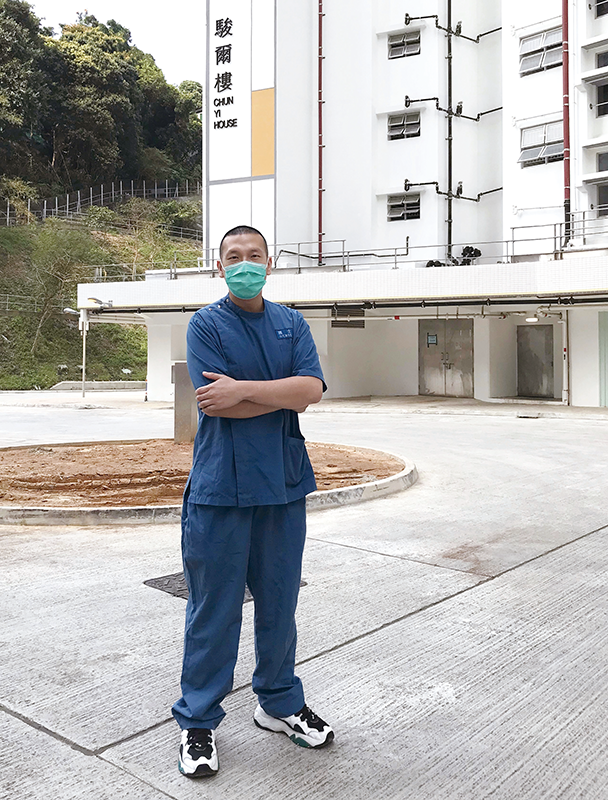Tokyo, Wuhan, Chun Yeung Estate, here we come
COVID-19 broke out during Chinese New Year holiday when many Hong Kong citizens were on vacation overseas or celebrating the festival in their hometowns. In response to the Hong Kong government‘s request, the medical team dispatched by Hospital Authority travelled with the government delegation by charter flights to bring Hong Kong residents stranded in Tokyo and Wuhan home.
Upon arrival in Hong Kong, the passengers were immediately sent to Chun Yeung Estate in Fo Tan for quarantine. Our Chun Yeung team, which comprises of nurses and phlebotomists, was responsible for taking blood samples and nasopharyngeal swab to timely identify cases of infection, so as to minimise the risk of community transmission.
Review proper procedure of wearing PPE before departure
In early February, COVID-19 epidemic took over the Diamond Princess cruise ship in Japan. The government arranged charter flights to Tokyo to evacuate Hong Kong residents on board. Lau Ping‑fat, Department Operations Manager of Accident and Emergency (A&E) Department, Pamela Youde Nethersole Eastern Hospital (PYNEH), took part in the operation. Recalling his previous five emergency medical repatriation operations, all of them were related to treating injuries. In this operation, however, he was up against highly infectious disease and other medical emergencies on the flight. Therefore, in addition to familiarising himself with the passenger information, he reviewed with colleague from Infection Control Team on the proper procedures of handwashing and donning and doffing personal protective equipment (PPE) to ensure comprehensive personal protection.
Wisdom in seat arrangement
Dr Lam Kin-kwan, Chairman of Kowloon East Cluster Resuscitation Committee, who participated in the operation of bringing Hong Kong residents back from Wuhan, recalls that the biggest challenge falls in formulating a strategy to tackle medical procedures with high risk of transmission in an enclosed environment on aeroplanes. “Any mistakes can result in the spread of aerosols that carry SARS‑CoV‑2 through air current, and consequently leading to a major outbreak among all passengers.” Considering that the airflow inside the plane moves from head to tail and will be exhausted afterwards, the seats should be arranged wisely: inbound passengers at the tail (hot zone); medical staff in the middle (warm zone); other staff members at the front (cold zone). Supplies could not be brought to the front once it enters the hot zone to prevent cross infection. High risk procedure should also be executed in the aft cabin so that the aerosols generated could be discharged at the soonest.
Ng Pui-shan, Advanced Practice Nurse of Department of A&E, Tseung Kwan O Hospital, who was also a member of the Wuhan team, is experienced in providing first-aid services and handling delivery. She reveals that there were a total of 13 pregnant women on board the first charter flight. As soon as the flight took off, she inspected around every 15 minutes to ensure that the passengers, especially pregnant women, were in good condition. She had also prepared a contingency plan for pregnant women in the case of delivery and vomiting. Since the mission was a one-day round trip, they wore their PPE throughout the operation with no food and drink in 14 hours in order to minimise the infection risk.
Chun Yeung Team dedicates to safeguard the community
After the first batch of residents returned from Wuhan of Hubei Province, Chun Yeung team which comprises over 30 nurses and phlebotomists immediately arranged blood and nasopharyngeal swab sampling. In just three days, the team established the command centre and multiple blood drawing stations in the quarantine centre. They formed teams of three, and each of the members was responsible for taking nasopharyngeal swab, blood samples and coordinating the work respectively. Jacky Lam, nurse of A&E Department at PYNEH, says, “Most of the people undergoing quarantine are very cooperative. Although some elderly and children may not understand the reason to repeatedly take blood samples, we sincerely communicated with them to ease their concerns and build mutual trust.”
COVID-19 wreaks havoc across the world
Changes in the landscape of care
An uphill battle




